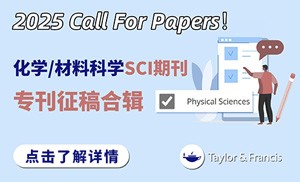样式: 排序: IF: - GO 导出 标记为已读
-
Approximate Bayesian inference for calibrating the IPCC tier-2 steady-state soil organic carbon model for Canadian croplands using long-term experimental data Environ. Model. Softw. (IF 4.8) Pub Date : 2025-04-15
N. Pelletier, A. Thiagarajan, F. Durnin-Vermette, L. Chang, D. Choo, D. Cerkowniak, A. Elkhoury, D. MacDonald, W. Smith, A.J. VandenBygaartWe conducted a Bayesian calibration of the IPCC tier-2 Steady-State (IPCCT2) model using long-term experimental (LTE) data from Canadian croplands. A global sensitivity analysis identified key parameters influencing the prediction of soil organic carbon (SOC) stocks, including those governing the temperature response curve, optimal decay rate in the passive pool, and stabilization efficiencies for
-
RIce-Net: Integrating ground-based cameras and machine learning for automated river ice detection Environ. Model. Softw. (IF 4.8) Pub Date : 2025-04-15
Mahmoud Ayyad, Marouane Temimi, Mohamed Abdelkader, Moheb M.R. Henein, Frank L. Engel, R. Russell Lotspeich, Jack R. EgglestonRiver ice plays a critical role in controlling streamflow in cold regions. The U.S. Geological Survey (USGS) qualifies affected water-level measurements and inferred streamflow by ice conditions at a date later than the day of the actual measurements. This study introduces a novel computer vision-based framework, River Ice-Network (RIce-Net), that uses the USGS nationwide network of ground-based cameras
-
A data fusion approach to enhancing runoff simulation in a semi-arid river basin Environ. Model. Softw. (IF 4.8) Pub Date : 2025-04-11
Afshin Jahanshahi, Haniyeh Asadi, Hoshin GuptaAccurate streamflow modeling is crucial for water resource management in dry and semi-arid regions. This study proposes a novel approach combining machine learning (ML) with conceptual and physically-based models to address of traditional model limitations in Iran's semi-arid Jazmourian River Basin. The HBV and SWAT hydrological models are used for conceptual and physically-based simulations, respectively
-
A post-processing machine learning framework for bias-correcting National Water Model outputs by accounting for dominant streamflow drivers Environ. Model. Softw. (IF 4.8) Pub Date : 2025-04-11
Savalan Naser Neisary, Ryan C. Johnson, Md Shahabul Alam, Steven J. BurianWhile the National Water Model (NWM) provides high-resolution, large-scale streamflow data across the United States, its effectiveness as a key water resources management tool in the drought-prone Western US needs further investigation. Previous studies revealed that the NWM has limitations in controlled basins, impacted by reservoir operations and diversions not explicitly included within the model
-
Multivariate functional data analysis and machine learning methods for anomaly detection in water quality sensor data Environ. Model. Softw. (IF 4.8) Pub Date : 2025-04-10
Xurxo Rigueira, David Olivieri, Maria Araujo, Angeles Saavedra, Maria PazoReliable anomaly detection is crucial for water resources management, but the complexity of environmental sensor data presents challenges, especially with limited labeled data in water quality analysis. Functional data has experienced significant growth in anomaly detection, but most applications focus on unlabeled datasets. This study assesses the performance of multivariate functional data analysis
-
Attention scores and peak perception in long-term ozone prediction using deep learning Environ. Model. Softw. (IF 4.8) Pub Date : 2025-04-08
Zhihao Xu, Danni Xu, Wenguang Li, Puyu Lian, Yuheng Chen, Fangyuan Yang, Kaihui ZhaoTo address the limitations of traditional ozone (O3) forecasting models, this study established a novel Transformer-based model integrating attention scores and the peak perception. Attention scores dynamically quantify nonlinear relationships between O3 and influencing factors, while peak perception method penalizes peak O3 errors, ensuring accurate predictions during O3 exceedance events. Our results
-
climdex-kit: An open software for climate index calculation, sharing and analysis towards tailored climate services Environ. Model. Softw. (IF 4.8) Pub Date : 2025-04-07
Piero Campalani, Alice Crespi, Massimiliano Pittore, Marc ZebischThe paper presents the open-source software climdex-kit which includes modules to compute, analyze and visualize climate indices based on the input data, target domain and temporal extent defined by the user. It is intended to ease the retrieval and interpretation of meaningful information for climate change studies and support the development of climate services for sectoral applications with flexible
-
Urban Flood Risk analysis using the SWAGU-coupled model and a cloud-enhanced fuzzy comprehensive evaluation method Environ. Model. Softw. (IF 4.8) Pub Date : 2025-04-07
Jinhui Hu, Changtao Deng, Xinyu Chang, Aoxuan PangThis study introduces the SWAGU model, which overcomes limitations of existing approaches by combining SWMM's robust pipe network modeling capabilities with ANUGA's advanced unstructured mesh-based surface flow simulation, enabling more accurate prediction of flood dynamics in complex urban environments. The model's outputs are integrated into an enhanced cloud model framework. This framework improves
-
More than modelling: Building trust for positive change in water resources management Environ. Model. Softw. (IF 4.8) Pub Date : 2025-04-06
Robert B. Sowby, Andrew J. South, Norman L. Jones, Easton G. Hopkins, Daniel P. AmesHydrologic modelling plays a vital role in water resources management but often falls short of achieving the positive change modelers envision. In this position paper we argue that a key contributing factor is the lack of trust and shared understanding among modelers, decision-makers, and the public. Models need to be trusted first—a social challenge as well as a technical one. Through three case studies—involving
-
Advancing timely satellite precipitation for IMERG-ER using GOES-16 data and a U-net convolutional neural network modelling approach Environ. Model. Softw. (IF 4.8) Pub Date : 2025-04-04
Mateo Vélez-Hernández, Paul Muñoz, Esteban Samaniego, María José Merizalde, Rolando CélleriTimely precipitation information is essential for water resources management and hazard monitoring. In regions with limited ground-based measurements, satellite precipitation products (SPPs) provide a valuable alternative, though data latency often creates an information gap for real-time applications. This study addresses the latency gap of IMERG-ER using a U-Net-based Convolutional Neural Network
-
SENTINEL: A Shiny app for processing and analysis of fenceline sensor data Environ. Model. Softw. (IF 4.8) Pub Date : 2025-04-03
M.K. MacDonald, W.M. Champion, E.D. ThomaSENTINEL (SEnsor NeTwork INtelligent Emissions Locator) is an application developed in R Shiny to support emerging user groups of lower cost fenceline sensors, such as those monitoring volatile organic compound or methane concentrations inside and near industrial facilities or for emergency response applications. During deployment, sensors collect a large quantity of high-frequency pollutant concentration
-
A prototype adaptive mesh generator for enhancing computational efficiency and accuracy in physically-based modeling of flood-landslide hazards Environ. Model. Softw. (IF 4.8) Pub Date : 2025-04-03
Guoding Chen, Ke Zhang, Sheng Wang, Lijun ChaoPredicting landslides across large regions using physically-based models requires balancing computational accuracy and efficiency. Current methods often use limited resolutions, underutilizing available data. We present a prototype mesh generator that manages multiple resolutions in grid-based modeling frameworks, focusing on identifying likely landslide initiation points and conditionally stable pixels
-
Spatial-temporal monitoring of compound droughts over global land areas Environ. Model. Softw. (IF 4.8) Pub Date : 2025-04-02
Zengchao Hao, Xuan Zhang, Yuting Pang, Boying Lv, Vijay P. SinghRecent decades have witnessed frequent droughts across spatial-temporal scales (or compound droughts), which challenges current drought monitoring systems that are usually designed based on drought information at a specific period or location. To address the challenge, this study proposed monitoring approaches for compound droughts, including preconditioned droughts, multivariate droughts, temporally
-
A global ocean circulation-tide-sea ice model using unstructured grid: Development, validation, and applications Environ. Model. Softw. (IF 4.8) Pub Date : 2025-04-02
Chunxiao Wang, Huaming Yu, Xin Qi, Yuchen Sun, Liansong Liang, Yang DingRecent advances in computing have transformed ocean modeling from single-process simulations—such as circulation, tides, and sea ice—into integrated models that couple multiple dynamic processes. This study introduces an innovative global ocean model using an unstructured mesh to enable precise, multi-scale simulations across complex terrains. We conducted a ten-year, global ocean circulation to assess
-
Landscape-level assessment of spray drift – A virtual experiment using the Droplet and Atmospheric Dispersion drift (DAD-drift) model Environ. Model. Softw. (IF 4.8) Pub Date : 2025-04-02
Mike Devin Fuchs, Sebastian Gebler, Andreas LorkeSpray drift significantly contributes to the off-target movement of pesticides. While factors influencing spray drift at the field scale, such as environmental conditions, equipment, and buffer zones, are well understood, deposition at landscape scale, is influenced by additional factors including landscape characteristics and the proximity of non-target areas. The DAD-drift model accounts for the
-
Subgrid correction of storm surge modeling in orthogonal curvilinear coordinates Environ. Model. Softw. (IF 4.8) Pub Date : 2025-04-02
Haoran Sun, Damrongsak Wirasaet, Andrew B. Kennedy, Yuepeng Li, Amirhosein Begmohammadi, Diogo BolsterEnsemble forecasts of storm surge require rapid computations of storm surge models over a fixed cycle, usually with relatively coarse-grid models. This work describes numerical extensions to include subgrid approaches accounting for the bulk effect of high-resolution bathymetry and bottom roughness to increase the accuracy of these coarse-grid setups. In particular, the subgrid corrections are developed
-
Navigating the space between empirics and theory – Empirically stylized modelling for theorising social-ecological phenomena Environ. Model. Softw. (IF 4.8) Pub Date : 2025-03-27
Maja Schlüter, Nanda Wijermans, Blanca González-Mon, Emilie Lindkvist, Kirill Orach, Hannah Prawitz, Romina Martin, Rodrigo Martínez-Peña, Kara E. Pellowe, Udita SangaThe potential of agent-based modelling (ABM) for developing theory has been recognized, yet methodologies are lacking. Building theories of social-ecological systems is challenging because of complex causality, context-dependence, and social-ecological interdependencies. We propose an approach that addresses these challenges through combining case-based empirical research with ABM in a collaborative
-
An urban flood inundation model accelerated by the parallel acceleration technology Environ. Model. Softw. (IF 4.8) Pub Date : 2025-03-24
Wei Zhu, Zhe Cao, Pingping Luo, Shuangtao Wang, Chengyi Xv, Yongxing JiDue to factors such as changes in land use and climate change, floods are increasingly occurring worldwide, resulting in excessive property damage and casualties in urban areas. Numerical simulation techniques can provide valuable support in mitigating urban flood risks. This study developed a coupled flood inundation model for one-dimensional sewer and two-dimensional surface based on parallel acceleration
-
A surrogate machine learning model using random forests for real-time flood inundation simulations Environ. Model. Softw. (IF 4.8) Pub Date : 2025-03-21
Santosh Kumar Sasanapuri, C.T. Dhanya, A.K. GosainReal-time simulation of flood inundation helps to mitigate the catastrophic effects on human lives by facilitating emergency evacuations. Traditional two-dimensional (2D) physics-based hydrodynamic models, though accurate, require significant computational time, thereby rendering them unsuitable for such real-time applications. To address this limitation, we developed Random Forest (RF) models as surrogate
-
ZHPO-LightXBoost an integrated prediction model based on small samples for pesticide residues in crops Environ. Model. Softw. (IF 4.8) Pub Date : 2025-03-21
Xiaopeng Sha, Yuejie Zhu, Xiaoying Sha, Zheng Guan, Shuyu WangExcessive dependence on and unreasonable use of pesticides in actual crop growth will lead to excessive pesticide residues and exacerbate environmental pollution. Therefore, the prediction of pesticide residues in crops is particularly important. In order to ensure the accuracy and generalization of the pesticide residue prediction model, a ZHPO-LightXBoost pesticide residue prediction model based
-
Revealing the causal response in landslide hydrology with MT-InSAR and spatial-temporal CCM: A case study in Jinsha River Environ. Model. Softw. (IF 4.8) Pub Date : 2025-03-20
Xiao Ling, Dongping Ming, Zhi Zhang, Jianao Cai, Wenyi Zhao, Mingzhi Zhang, Yongshuang Zhang, Bingbo GaoConvergent Cross Mapping (CCM) is a powerful tool for analyzing causality in complex dynamic systems. However, standard CCM and Geographical CCM (GCCM) focus exclusively on temporal or spatial attributes, failing to integrate both dimensions. This study introduces a spatial-temporal CCM that quantifies the state of convergence to enable batched analyses of large-scale spatial datasets. The proposed
-
pytRIBS: An open, modular, and reproducible python-based framework for distributed hydrologic modeling Environ. Model. Softw. (IF 4.8) Pub Date : 2025-03-19
L. Wren Raming, Enrique R. Vivoni, C. Josh Cederstrom, M. Akram Hossain, Jose A. BecerraDistributed hydrologic models (DHM) are essential tools for understanding how and where water moves through a landscape. However, DHMs can be time-consuming and challenging to setup, limiting their application. Here, we present pytRIBS, a tool that addresses these challenges for the TIN-based Real-time Integrated Basin Simulator (tRIBS). pytRIBS is an open-source Python package with an object-oriented
-
Carbon emissions prediction based on ensemble models: An empirical analysis from China Environ. Model. Softw. (IF 4.8) Pub Date : 2025-03-18
Song Hu, Shixuan Li, Lin Gong, Dan Liu, Zhe Wang, Gangyan XuThe global warming problem has seriously threatened the sustainable development of human society. In order to effectively control carbon emissions, this study integrates economic, social, energy, and environment (ESEE) factors to develop a comprehensive, multi-dimensional carbon emissions prediction (CEP) index system, crucial for analyzing the determinants of carbon emissions and forecasting future
-
A machine learning model integrating spatiotemporal attention and residual learning for predicting periodic air pollutant concentrations Environ. Model. Softw. (IF 4.8) Pub Date : 2025-03-18
Farun An, Dong Yang, Xiaoyue Sun, Haibin Wei, Feilong ChenThe variations in pollutant concentrations during tunnel construction, in urban atmosphere, and along pedestrian paths exhibit distinct periodicity. Accurate prediction of pollutant concentrations is crucial for improving the quality of the construction and living environments. Using tunnel construction scenarios as a case, this study proposes a Convolutional Neural Network and Bidirectional Long Short-Term
-
Evaluating Australian forest fire rate of spread models using VIIRS satellite observations Environ. Model. Softw. (IF 4.8) Pub Date : 2025-03-17
Matthew G. Gale, Geoffrey J. CaryAccurate prediction of head-fire rate of spread is essential to fire management decisions during wildfires, however, evaluation of existing models is limited. Acquisition of reliable rate of spread observations for model evaluation is a key challenge, since wildfires are typically rare and difficult to monitor. We applied recent advances in satellite active fire remote sensing to generate a novel set
-
AquaNutriOpt II: A multi-period bi-objective nutrient optimization python tool for controlling harmful algal blooms — A case study of Lake Okeechobee Environ. Model. Softw. (IF 4.8) Pub Date : 2025-03-16
Ashim Khanal, Osama M. Tarabih, Mauricio E. Arias, Qiong Zhang, Hadi CharkhgardWe introduce a significantly enhanced version of AquaNutriOpt, now equipped with advanced mathematical optimization capabilities absent in its initial release (Khanal et al., 2024). AquaNutriOpt II is a user-friendly, free, open-source Python tool designed to address the complex challenge of optimizing nutrient management for controlling harmful algal blooms. In this latest version, users gain the
-
A new conditional generative adversarial neural network approach for statistical downscaling of the ERA5 reanalysis over the Italian Peninsula Environ. Model. Softw. (IF 4.8) Pub Date : 2025-03-14
Ilenia Manco, Walter Riviera, Andrea Zanetti, Marco Briscolini, Paola Mercogliano, Antonio NavarraState-of-the-art General Circulation Models (GCMs) typically operate at a coarse spatial resolution, requiring a refinement to assess regional climate changes and their impacts. This weakness is mainly known for representing regional-scale topography and meteorological processes, particularly those responsible for extreme events. Dynamical downscaling methods are computationally demanding. In contrast
-
WigglyRivers: A tool to characterize the multiscale nature of meandering channels Environ. Model. Softw. (IF 4.8) Pub Date : 2025-03-14
Daniel Gonzalez-Duque, Jesus D. Gomez-VelezChannel sinuosity is ubiquitous along river networks, producing complex patterns that encapsulate and influence morphodynamic processes and ecosystem services. Accurately characterizing these patterns is challenging with traditional curvature-based algorithms. Here, we present WigglyRivers, a Python package that builds on existing wavelet-based methods to create an unsupervised meander identification
-
Innovative knowledge-based system for streamflow hindcasting: A comparative assessment of Gaussian Process-Integrated Neural Network with LSTM and GRU models Environ. Model. Softw. (IF 4.8) Pub Date : 2025-03-13
Arathy Nair G R, Adarsh SLack of historical data is a major bottleneck for hydrologists to proceed with reliable climate change studies. This work proposes Gaussian Process-Integrated Neural Network (GAUSNET) technique for streamflow hindcasting by considering significant hydrological variables and Global climatic oscillations (GCO) identified by Variance Inflation Factor as system inputs. Dynamic Time Warping based Interpolation
-
On the future of hydroecological models of everywhere Environ. Model. Softw. (IF 4.8) Pub Date : 2025-03-13
Keith BevenThis paper addresses the potential for hydroecological models of everywhere to be used, in conjunction with interaction with local stakeholders, as a way of learning about places as well as being used as predictive tools. The importance of facilitating stakeholder involvement in defining assumptions and uncertainties, and in model evaluation is stressed. The potential for using data science and real-time
-
A Markov Chain Monte Carlo approach for complex lava flow simulations driven by satellite-derived data Environ. Model. Softw. (IF 4.8) Pub Date : 2025-03-13
Francesco Zuccarello, Giuseppe Bilotta, Flavio Cannavò, Annalisa Cappello, Roberto Guardo, Gaetana GanciWe present a novel optimization strategy for the numerical simulation of lava flows that automatically find the best combination of input parameters to fit observed flows considering their uncertainties. The approach is based on the Metropolis algorithm, a Monte Carlo Markov Chain (MCMC) method that performs a sequence of simulations aiming to refine the sampling of unknown parameters to determine
-
Models and the common good Environ. Model. Softw. (IF 4.8) Pub Date : 2025-03-12
Andrea SaltelliHow can models do well for the common good? Narratives and counter-narratives are possible to answer the question. The latter are taken here to argue that models may misuse their epistemic authority for reasons of occasion, opportunity and interest. A solution calls for the involvement of more disciplines and actors, but these are not by themselves sufficient due to the present governance, practice
-
Uncertainty estimation for environmental multimodel predictions: The BLUECAT approach and software Environ. Model. Softw. (IF 4.8) Pub Date : 2025-03-12
Alberto Montanari, Demetris KoutsoyiannisAn extension of the BLUECAT approach and software for uncertainty assessment of environmental predictions is presented, allowing the application to multimodel outputs. BLUECAT operates by transforming a point prediction provided by deterministic models to a corresponding stochastic formulation, thereby allowing the estimation of a bias corrected expected value along with confidence limits. In this
-
Analysis of SWAT+ model performance: A comparative study using different software and algorithms Environ. Model. Softw. (IF 4.8) Pub Date : 2025-03-12
Samanta Tolentino Cecconello, Danielle Bressiani, Maria Cândida Moitinho Nunes, Luís Carlos TimmThe Soil and Water Assessment Tool plus (SWAT+) model is widely used to analyze water dynamics in hydrological processes. It improves upon the earlier SWAT version by incorporating decision tables that allow for the specification of different land use management activities and scenarios. However, accurate watershed representation requires proper calibration and validation. Among the available open-source
-
A hybrid framework for regional climate seasonality study and trend analysis Environ. Model. Softw. (IF 4.8) Pub Date : 2025-03-11
Masooma Suleman, Peter A. KhaiterOne of the profound effects produced by climate change is shifting the seasons in terms of both duration and start/end dates. It is important for sustainable management to detect and predict any such seasonal changes as they may trigger earlier-than-usual timing of plant phenology, animal migration, and other ecological, environmental, economic, and social implications. In this study, we are using
-
Dust storm detection for ground-based stations with imbalanced machine learning Environ. Model. Softw. (IF 4.8) Pub Date : 2025-03-08
Shikang Du, Siyu Chen, Shanling Cheng, Jiaqi He, Dan Zhao, Xusheng Zhu, Lulu Lian, Xingxing Tu, Qinghong Zhao, Yue ZhangDust storms, common meteorological hazard in arid and semi-arid regions, have significant environmental and societal impacts. Rapid and accurate detecting dust storms is critical for early warning systems. Over the past few decades, dust storm detection primarily relied on satellite remote sensing techniques using multi-channel imagery, but these methods have limitations in temporal resolution. With
-
PyTorchFire: A GPU-accelerated wildfire simulator with Differentiable Cellular Automata Environ. Model. Softw. (IF 4.8) Pub Date : 2025-03-07
Zeyu Xia, Sibo ChengAccurate and rapid prediction of wildfire trends is crucial for effective management and mitigation. However, the stochastic nature of fire propagation poses significant challenges in developing reliable simulators. In this paper, we introduce PyTorchFire, an open-access, PyTorch-based software that leverages GPU acceleration. With our redesigned differentiable wildfire Cellular Automata (CA) model
-
Advancing open and reproducible water data science by integrating data analytics with an online data repository Environ. Model. Softw. (IF 4.8) Pub Date : 2025-03-06
Jeffery S. Horsburgh, Scott Black, Anthony Castronova, Pabitra K. DashScientific and management challenges in the water domain require synthesis of diverse data. Many analysis tasks are difficult because datasets are large and complex, standard formats are not always agreed upon or mapped to efficient data structures, scientists may lack training for tackling large and complex datasets, and it can be difficult to share and reproduce data science workflows. Overcoming
-
Efficient and fine-grained viewshed analysis in a three-dimensional urban complex environment Environ. Model. Softw. (IF 4.8) Pub Date : 2025-03-06
Yifan Zhang, Mengyu Ma, Jun Li, Anran Yang, Qingren Jia, Zebang LiuPerforming efficient and fine-grained viewshed analysis in 3D complex urban models, particularly when handling large-scale datasets, presents a significant challenge in Geographic Information Systems (GIS). Existing methods are primarily designed for 2.5D raster models and struggle to effectively manage large-scale data. Furthermore, the commonly utilized approaches for 3D models need large display
-
Can large language models effectively reason about adverse weather conditions? Environ. Model. Softw. (IF 4.8) Pub Date : 2025-03-05
Nima Zafarmomen, Vidya SamadiThis paper seeks to answer the question “can Large Language Models (LLMs) effectively reason about adverse weather conditions?”. To address this question, we utilized multiple LLMs to harness the US National Weather Service (NWS) flood report data spanning from June 2005 to September 2024. Bidirectional and Auto-Regressive Transformer (BART), Bidirectional Encoder Representations from Transformers
-
An efficient modern convolution-based dynamic spatiotemporal deep learning architecture for ozone prediction Environ. Model. Softw. (IF 4.8) Pub Date : 2025-03-05
Ao Li, Ji Li, Zhizhang ShenOzone pollution threatens ecosystems and human health, necessitating accurate forecasting for better management and policy implementation. To address this, we developed O3ConvNet, a convolution-based dynamic spatiotemporal deep learning model. It incorporates ModernTCN, a multivariate time series feature module, and a spatial message passing module using a dynamic adjacency matrix with geographic and
-
Simulation decomposition analysis of the Iowa food-water-energy system Environ. Model. Softw. (IF 4.8) Pub Date : 2025-03-05
Taeho Jeong, Mariia Kozlova, Leifur Thor Leifsson, Julian Scott YeomansThis study applies global sensitivity analysis (GSA) to the Iowa Food-Water-Energy system, focusing on nitrogen export into the Mississippi River. A binning method combined with simulation decomposition (SimDec) quantifies and visualizes the influence of crucial aggregate input variables — manure nitrogen (MN), commercial nitrogen (CN), grain nitrogen (GN), and fixation nitrogen (FN) — on nitrogen
-
Dissolved oxygen prediction in the Dianchi River basin with explainable artificial intelligence based on physical prior knowledge Environ. Model. Softw. (IF 4.8) Pub Date : 2025-03-05
Junhao Wu, Xi Chen, Jinghan Dong, Nen Tan, Xiaoping Liu, Antonis Chatzipavlis, Philip LH. Yu, Adonis Velegrakis, Yining Wang, Yonggui Huang, Heqin Cheng, Diankai WangDissolved oxygen (DO) is a critical parameter for monitoring water quality. However, most existing deep learning models have overlooked the physical relationship between DO and other parameters during simulation, leading to simulated values that deviate from the actual physical laws. Moreover, the inherent opacity of deep learning models restricts their applicability. Here, we propose the prior knowledge-constrained
-
Gridemis V2.0: A highly integrated algorithm scheme for high-resolution and multi-component allocation of emission inventories used in air quality models Environ. Model. Softw. (IF 4.8) Pub Date : 2025-03-04
Chuanda Wang, Wenjiao Duan, Shuiyuan Cheng, Xiaosong Hou, Junfeng Zhang, Yu Wang, Hanyu Zhang, Kai Wang, Rui LiuA novel algorithm for generating multi-component, high-resolution emission inventories for air quality models (AQMs) was developed, enhancing the 0.01° spatial allocation scheme for points, lines, and surfaces based on land use, population density, and road networks. It incorporated localized chemical species allocation based on recent Volatile Organic Compounds (VOCs) and Particulate Matter (PM) composition
-
FloodGame: An interactive 3D serious game on flood mitigation for disaster awareness and education Environ. Model. Softw. (IF 4.8) Pub Date : 2025-03-04
Bekir Z. Demiray, Yusuf Sermet, Enes Yildirim, Ibrahim DemirThe number and devastating impacts of natural disasters have grown significantly worldwide, and floods are one of the most dangerous and frequent natural disasters. Recent studies emphasize the importance of public awareness in disaster preparedness and response activities. FloodGame is designed as a web-based interactive serious game geared towards educating K-12 and college students and raising public
-
An advection-dispersion model for routing suspended sediment down the river network Environ. Model. Softw. (IF 4.8) Pub Date : 2025-03-04
Arman Haddadchi, Calvin W. RoseThis paper introduces a new high temporal resolution suspended sediment routing model that integrates fine sediment deposition and re-entrainment processes of individual size fractions with suspended sediment transport throughout the river network. This multi-size fraction model provides unique insights into the effects of sediment size classes on key sediment attributes, including suspended sediment
-
Multi-granularity PM2.5 concentration long sequence prediction model combined with spatial–temporal graph Environ. Model. Softw. (IF 4.8) Pub Date : 2025-03-03
Bo Zhang, Hongsheng Qin, Yuqi Zhang, Maozhen Li, Dongming Qin, Xiaoyang Guo, Meizi Li, Chang GuoAir pollution problem seriously affects the ecological environment and human health. More accurate predictions over a longer time span would enhance the effectiveness of early warning and prevention measures. Although existing methods have made progress in short sequence prediction, the predictions on long sequences remain challenges due to information loss. In this paper, we propose a spatial–temporal
-
PlotToSat: A tool for generating time-series signatures from Sentinel-1 and Sentinel-2 at field-based plots for machine learning applications Environ. Model. Softw. (IF 4.8) Pub Date : 2025-03-01
Milto Miltiadou, Stuart Grieve, Paloma Ruiz-Benito, Julen Astigarraga, Verónica Cruz-Alonso, Julián Tijerín Triviño, Emily R. LinesPlotToSat offers a practical and time efficient way to the challenge of extracting time-series from multiple Earth Observation (EO) datasets at numerous plots spread across a landscape. This opens up new opportunities to understand and model various ecosystems. Regarding forest ecology, plot networks play a vital role in monitoring and understanding the dynamics of forest ecosystems. These networks
-
SHAP-NET, a network based on Shapley values as a new tool to improve the explainability of the XGBoost-SHAP model for the problem of water quality Environ. Model. Softw. (IF 4.8) Pub Date : 2025-03-01
Marek KrukThe aim of this work is to find an effective combination of modelling based on the boosting technique and Shapley value computation with the practise of evaluating an undirected graph model. To this end, we created an XGBoost-SHAP regression model in which the target variable is the cyanobacteria concentration and the model variables consist of 20 environmental factors. Two partial correlation-based
-
A generalised sigmoid population growth model with energy dependence: Application to quantify the tipping point for Antarctic shallow seabed algae Environ. Model. Softw. (IF 4.8) Pub Date : 2025-03-01
Elise Mills, Graeme F. Clark, Matthew J. Simpson, Mark Baird, Matthew P. AdamsSigmoid growth models are often used to study population dynamics. The size of a population at equilibrium commonly depends explicitly on the availability of resources, such as an energy or nutrient source, which is not explicit in standard sigmoid growth models. A simple generalised extension of sigmoid growth models is introduced that can explicitly account for this resource-dependence, demonstrated
-
Toward improved deep learning-based regionalized streamflow modeling : Exploiting the power of basin similarity Environ. Model. Softw. (IF 4.8) Pub Date : 2025-03-01
Yang Xu, Heng Li, Yuqian Hu, Chunxiao Zhang, Bingli XuIn deep learning (DL)-based regionalized streamflow modeling, basin similarity has demonstrated to be effective for sharing hydrological information. However, the differences in the use of hydrological information by DL due to different basin similarity strategies remain underexplored. For this, we cluster and regionalize 222 Australian basins based on hydrology, climate, landscape, and position characteristics
-
Generic spectral library framework for urban land cover mapping with optical remote sensing imagery Environ. Model. Softw. (IF 4.8) Pub Date : 2025-02-28
Frederik Priem, Marianne Jilge, Uta Heiden, Ben Somers, Frank CantersSpectral libraries link surface reflectance characteristics to thematic cover type interpretation. Despite their potential, spectral libraries are rarely used beyond their original application or analysis. In this paper we introduce the concept of a Generic Urban Spectral Library (GUSL). A GUSL is a thoroughly labelled collection of multi-site, -sensor and -temporal spectral libraries that supports
-
What is the optimal digital elevation model grid size to best capture hillslope gullies and contour drains? Environ. Model. Softw. (IF 4.8) Pub Date : 2025-02-27
W.D. Dimuth P. Welivitiya, G.R. HancockAerial and ground-based survey routinely employs technology such as digital photogrammetry, Light Detecting and Ranging (LiDAR) and Terrestrial Laser Scanning (TLS). These systems produce huge data sets with varying accuracy and reliability. At present there are no guidelines for the grid size dimension needed to accurately and reliably represent common features such as rills, gullies and contour drains
-
Integration and execution of Community Land Model Urban (CLMU) in a containerized environment Environ. Model. Softw. (IF 4.8) Pub Date : 2025-02-27
Junjie Yu, Yuan Sun, Sarah Lindley, Caroline Jay, David O. Topping, Keith W. Oleson, Zhonghua ZhengThe Community Land Model Urban (CLMU) is a process-based numerical urban climate model that simulates the interactions between the atmosphere and urban surfaces, serving as a powerful tool for the convergence of urban and climate science research. However, CLMU presents significant challenges due to the complexities of model installation, environment and case configuration, and generating model inputs
-
FlorID – A nationwide identification service for plants from photos and habitat information Environ. Model. Softw. (IF 4.8) Pub Date : 2025-02-26
Philipp Brun, Lucienne de Witte, Manuel Richard Popp, Damaris Zurell, Dirk Nikolaus Karger, Patrice Descombes, Riccardo de Lutio, Jan Dirk Wegner, Christophe Bornand, Stefan Eggenberg, Tasko Olevski, Niklaus E. ZimmermannCitizen science has become key to biodiversity monitoring but critically depends on accurate quality control that is scalable and tailored to the focal region. We developed FlorID, a free-to-use identification service for all native and many non-native plants of Switzerland. FlorID can identify >3000 species, using vision transformers trained on 1.5M photos, and ecological predictions from multilayer
-
Modelling bushfire severity and predicting future trends in Australia using remote sensing and machine learning Environ. Model. Softw. (IF 4.8) Pub Date : 2025-02-26
Shouthiri Partheepan, Farzad Sanati, Jahan HassanBushfires are one of the major natural disasters that cause huge losses to livelihoods and the environment. Understanding and analysing the severity of bushfires is crucial for effective management and mitigation strategies, helping to prevent the extensive damage and loss caused by these natural disasters. This study presents an in-depth analysis of bushfire severity in Australia over the last twelve
-
Application of the 2D high-resolution eco-hydraulics model based on GPU acceleration technology in the Upper Yellow River Environ. Model. Softw. (IF 4.8) Pub Date : 2025-02-25
Lu Yang, Jingming Hou, Xinhong Wang, Pan Wang, Yongwei WangThis paper presents a high-resolution 2D eco-hydraulics model accelerated by GPU technology, specifically designed for a spawning ground of Gymnocypris eckloni located downstream of the B hydropower station in the Upper Yellow River. The model evaluates the quality of the spawning habitat from April to June during a typical year. The calculation efficiency is improved by 12.1 times eco-hydraulics on
-
SeqIA: A Python framework for extracting drought impacts from news archives Environ. Model. Softw. (IF 4.8) Pub Date : 2025-02-24
Miguel López-Otal, Fernando Domínguez-Castro, Borja Latorre, Javier Vela-Tambo, Jorge GraciaDrought is a hazard that causes great economic, ecological, and human loss. With an ever-growing risk of climate change, their frequency and magnitude are expected to increase. While there are many indices and metrics available for the analysis of droughts, assessing their impacts represents one of the best ways to understand their magnitude and extent. However, there are no systematic records outlining
-
porousRTFoam v1.0: An open-source numerical platform for simulating pore-scale reactive transport processes in porous media Environ. Model. Softw. (IF 4.8) Pub Date : 2025-02-23
Xueying Li, Xiaofan YangporousRTFoam v1.0 is a software developed to solve pore-scale hydro-bio-geochemical processes in porous media. It is developed based on OpenFOAM® by using the micro-continuum approach, which is adopted to solve a system of equations, including the Darcy-Brinkman-Stokes equation, the advection-diffusion equation with geochemical source terms, as well as biomass evolution with Monod kinetics for biofilm
-
Semantic-driven parametric 3D geographic scene modeling: Integrating knowledge graphs and large language models Environ. Model. Softw. (IF 4.8) Pub Date : 2025-02-22
Pei Dang, Jun Zhu, Chao Dang, Heng ZhangParametric geographic scene modeling serves as the primary method for achieving large-scale rapid spatial visualization. However, balancing modeling efficiency and specificity of geographic entities poses significant challenges due to the complexity and diversity of real-world geographic environments. This study proposes a novel 3D geographic scene modeling approach that integrates knowledge graphs







































 京公网安备 11010802027423号
京公网安备 11010802027423号